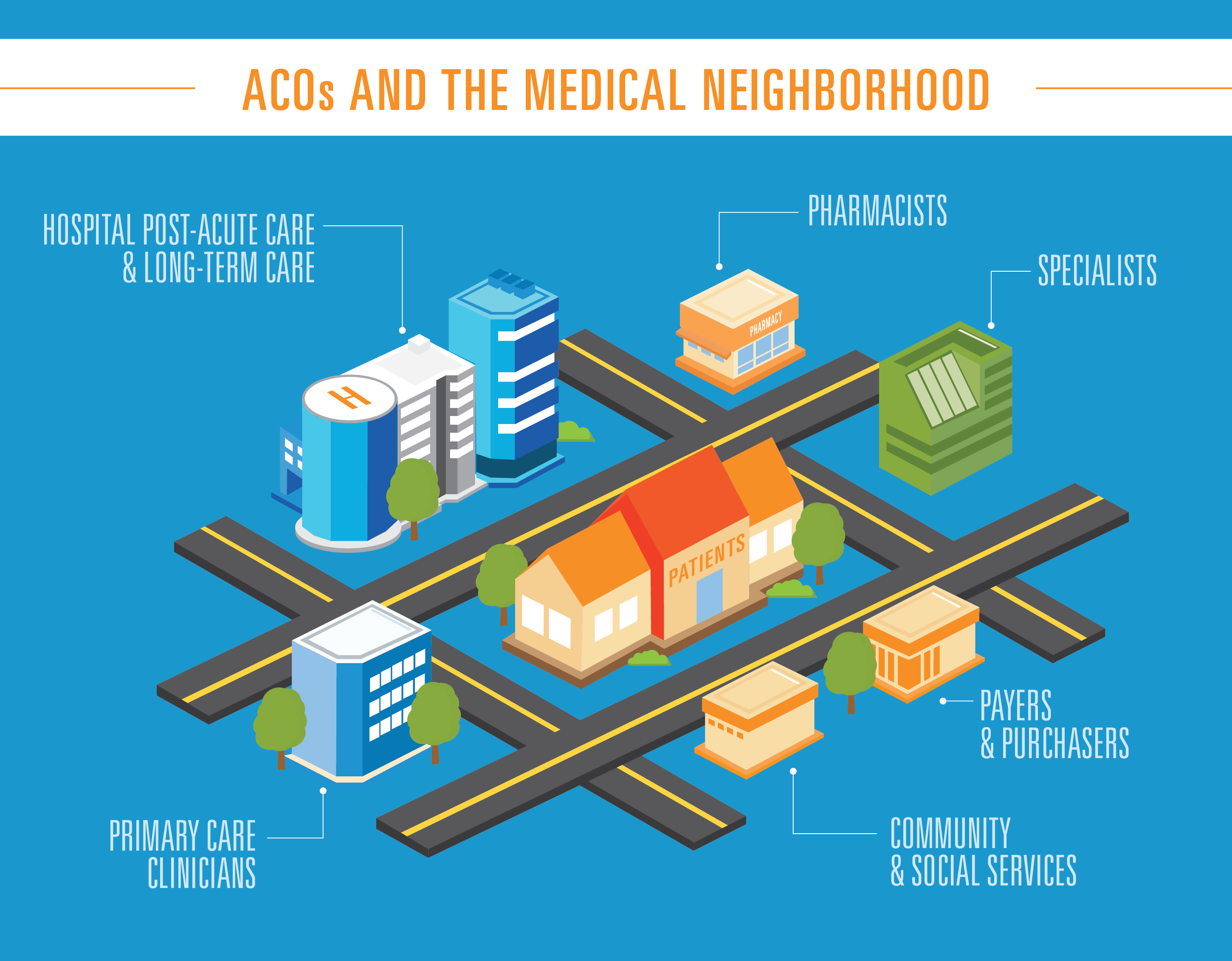
What Can Healthcare Learn From Other Industries? 6 Ideas

At a Glance
| The Challenge | Why It Matters | What You Can Do |
| Healthcare organizations often hesitate to compare themselves to other industries, but there are still many parallels. | Learning from leaders in unrelated industries can help healthcare orgs improve service, attract & retain patients/members, & increase profitability. | 1. Measure & exceed expectations 2. Build a culture of safety 3. Constantly evaluate vendors 4. Focus on long-term value 5. Embrace user-friendly language & design 6. Leverage omnichannel communication |
What can healthcare learn from other industries? It’s a question that professionals in the healthcare industry often hesitate to ask themselves, given how distinctly they operate.
It’s true that healthcare, unlike many other businesses, deals with patients and members rather than customers, is highly regulated, and has a unique intermediary payment system. Yet there are still plenty of parallels between healthcare and other businesses. At the end of the day, organizations in healthcare still have many of the same goals as any other: provide great service; attract and retain their target audience; and increase profitability.
With so many businesses in unrelated industries excelling in these areas, healthcare organizations would do well to take a page out of their playbooks. This is especially true at a time when healthcare organizations are struggling to contain costs and earn the trust of patients and members.
But what can healthcare learn from other industries specifically? Here are a few of the top examples.
What can healthcare learn from other industries?
1. Exceed Expectations Like Chewy
Even if you’ve never purchased anything from online pet supplies retailer Chewy, you may have heard rave reviews from their many devotees. And these kudos are well-deserved — few brands out there have mastered the customer journey as well as they have. As a result, there’s a lot that healthcare organizations can learn from Chewy when it comes to understanding their audience and blowing their expectations out of the water.
I first heard of Chewy when our family got a dog in 2007. At the time, my mom was the kind of pet parent who only wanted to buy products straight from the vet. After my dad begged her to find a pet supply source with a lower markup, however, she came across Chewy.
The first step in their onboarding process was a detailed survey that helped them create a profile for our dog, Maya. They asked a lot of questions you’d expect — age, breed, weight, etc. — but also dove deep into topics like grooming. It wasn’t long before they began sending complimentary bows every six weeks along with her food delivery.
Chewy also prompted my mom to do a comprehensive review of Maya’s profile once a year, in addition to regular micro check-ins to see if her needs or preferences had changed. That’s a stark difference to healthcare providers who rarely go beyond the government-mandated CAHPS surveys. By relying only on backward-looking, once-a-year surveys from slow-moving vendors like Press Ganey, though, healthcare organizations miss out on important opportunities to understand, engage, and activate their audience.
Learn more: Improve Care with Real-Time Member & Patient Feedback
What Chewy is best known for, though, is how much they support their customers after a pet dies. After Maya died, Chewy not only sent us a handwritten sympathy card but also a care package filled with her favorite products. On the six-month anniversary of her death, they even texted my mom a link to support services in the area.
That’s the kind of empathy that turns customers into advocates. And if it meant that much after the death of a pet, think of how much more it would mean after the death of a partner, friend, or family member.
2. Create a Culture of Safety Like the Aviation Industry
When discussing “what can healthcare learn from other industries,” safety should undoubtedly be one of the top responses. While health there are government regulations in healthcare, they’re nowhere near as stringent as the ones in aviation. And even though it’s easy to point to safety failures in the aviation industry, they are comparatively much rarer than in healthcare.
The Boeing 737 safety issues in the last year, for example, were front-page news for days, if not weeks. But when was the last time you saw an article about a patient falling or contracting sepsis at a local hospital?
Between 700,000 and a million hospitalized patients fall each year,1 while one in 31 get infections.2 By contrast, there were only about 0.21 serious injuries per 100,000 departures in the aviation industry between 2015 and 2020 (and keep in mind, the average departure has several hundred passengers).3
To meet government regulations, many companies in aviation adopt cultures of safety and continuous improvement. According to the Federal Aviation Administration, a few key features of successful safety cultures include:4
- Surveying and interviewing employees to identify weak spots and get their input on how to improve
- Creating “voluntary, confidential, and non-punitive” programs to report and track safety incidents
- Bringing in auditors to observe operations and provide recommendations
- Executive buy-in, such as establishing organization-wide safety Key Performance Indicators (KPIs) and having senior leaders participate in safety meetings
- Conducting incident and accident reports to understand why safety failures happen and prevent them from occurring again
While originating in the aviation industry, these practices are all ones that healthcare organizations can easily adopt as well.
Read more: 4 Key Ways Healthcare Providers Can Cultivate a Patient Safety Culture
3. Incorporate Technology Like the Shipping Industry
While healthcare organizations wholeheartedly embrace technology when it comes to treatment, they often hesitate when it comes to operations. Many times, this is because they worry about saddling frontline staff and patients with the responsibility of learning new platforms. But the right solutions shouldn’t be burdens — they should fit in seamlessly with existing workflows.
Few industries know this better than shipping. While the industry was once characterized by backbreaking labor, manual checks, delays, and inefficiencies, today’s modern shipping companies operate like well-oiled machines. Part of this is due to an increase in industrial equipment like cranes, forklifts, and shipping containers, but digital solutions have played a critical role as well.
Supply chain management platforms streamline coordination across transportation stages, while maritime and ocean freight software can help optimize routes, mitigate risks, manage fleets, and track cargo. Without these tools, Amazon’s two-day Prime deliveries would be no more than wishful thinking. Critically, organizations like these don’t just settle on one solution and move on. With the ever-constant pressure to deliver on time, they’re constantly re-evaluating how technology can fit into their operations.
In contrast, many healthcare organizations stick with legacy tools even after they’ve outgrown their capabilities. So when considering “what can healthcare learn from other industries,” make sure to focus on the shipping industry’s practice of constant evaluation. Don’t be afraid to submit RFPs, do real use case testing, conduct pilots, and adapt your processes as needed.
4. Prioritize Lifetime Value Like Costco
Walk into any Costco, and among the most prominent displays you’ll see when you first walk in is their rotisserie chicken. Despite this being among their most popular items, it doesn’t net them any profit. Instead, they choose to sell it at a loss.5 As it turns out, the $4.99 price tag attracts enough customers and inspires enough brand loyalty to offset losses.
That’s not all they do to keep customers loyal, though. Between its membership program, bulk deals, employee satisfaction, and sustainability initiatives, Costco is always coming up with new ways to delight customers. And that’s because they know that a happy customer comes back again and again.
I don’t bring this up to say that health systems and payers should start slashing their prices. I do believe, though, that they would benefit from thinking more about the lifetime value patients and members can bring. Too often, healthcare organizations are so busy putting out fires that they don’t think about the long term. But this can end up coming back to haunt them.
I’ll give you an example. Some friends of mine delivered their son a couple of years ago at the health system the father and his parents had been going to for their entire lives. Their son was born a month early and spent his first several days in the NICU. They were understandably upset and nervous, especially as first-time parents.
The mom understood that she couldn’t be with her son all the time — after all, he needed medical attention. But she was distraught by how little the health system communicated with her.
There was no camera for them to check in on their newborn son. There was no one reaching out to them for emotional support. The staff wasn’t even as proactive about clinical updates as they should have been. So it’s no surprise that as soon as they were cleared to take him home, she started looking for another pediatrician.
While my friend’s son did ultimately get the care he needed, the health system neglected their emotional well-being. After my friends spread the word of their traumatic experience to their friends and family members, those folks started looking for different providers as well. All in all, the health system lost ten patients as a result of that one negative experience.
While healthcare organizations have to deliver excellent care, they need to balance that with a focus on long-term patient and member experience. If not, they risk losing not only individual patients and members but also anyone in their social circles.
5. Embrace User-Friendly Design & Language Like WebMD
Healthcare professionals don’t always have the most favorable view of WebMD. Just about any frontline staffer can tell you about a time it caused a patient or member to misdiagnose themselves. So it’s understandable that they may not to look to WebMD as an example when considering, “what can healthcare learn from other industries.” Still, it’s popular for a reason — in fact, over 180 million people use WebMD a month.6
WebMD’s signature symptom checker may not take much nuance into account, but it is incredibly user-friendly. Visitors don’t need a detailed knowledge of anatomy or familiarity with medical jargon to research WebMD. They just have to point and click on whichever parts of their body are bothering them. And for many visitors, that accessibility outweighs concerns over accuracy.
Healthcare organizations, however, have the benefit of having experienced, knowledgeable medical professionals on staff. Combine that resource with the simplicity and ease of use that WebMD boasts, and attracting and engaging patients/members becomes much easier. Some vendors build symptom checkers for health organizations’ websites — but you can make even simpler changes than that.
Take physician search functionalities. Frequently, payers’ and providers’ websites require patients to search for departments by their specialty name. But visitors are much more likely to search “diabetes” than “endocrinologist,” or “heart surgery” than “coronary artery bypass grafting.” And if your search results don’t account for that, you increase the odds of cutting their session short. They may even turn to a more user-friendly competitor.
Read more: The Digital Front Door: Improving Healthcare Access Through Patient Engagement Technology
When patients and members come to you citing WebMD, it’s not because they think they know better. It’s because sites like those are built with them in mind. Draw inspiration from those sites, and you can seize a valuable engagement opportunity.
6. Leverage Omnichannel Communication Like Bank of America
I can’t tell you how many times I’ve heard providers say they want to increase MyChart adoption, or payers say they want to increase app adoption. While these sound like reasonable goals on the surface, they put your organization’s goals at odds with your audience’s preferences.
And usually, that’s a losing battle. While you may want patients/members to use MyChart or your app, there’s no guarantee they’ll do so. Campaigns to encourage adoption can be expensive, and any results you see rarely last in the long term.
Other industries have long tried to shoehorn customers into one-size-fits-all paths to lower costs and improve efficiency. In years past, that often meant directing them to outsourced call centers. More recently, it has involved AI chatbots. While there’s nothing wrong with these options in themselves, it is short-sighted to focus on them exclusively. Rather, the best long-term strategy is to meet audiences where they are.
Take Bank of America (BoA), for example. The banking industry may have a reputation for being traditional, but BoA is anything but. In 2023, they won Innovator of the Year at the Bank Customer Experience (BCX) Awards.7 Some of their notable omnichannel innovations have included:
- Teller-less “robo-branches” in which customers can carry out any transaction as they would at an in-person bank
- A virtual financial planning assistant called Erica
- A dedicated microsite called Better Money Habits to help customers make more informed financial, investing, and homeownership decisions
Omnichannel strategies don’t always have to be high-tech, though. The more important thing is to adapt to your audience’s preferences — like the 75% of consumers who prefer appointment reminder texts to phone calls.8
Making “What Can Healthcare Learn From Other Industries?” Your New Motto
For many healthcare professionals, “What can healthcare learn from other industries?” can seem like a loaded question. Of course, the healthcare industry is different from others in many ways. Providers and payers have unique challenges, audiences, and organizational structures that other businesses can’t always relate to. But by writing those organizations off as too different to learn from, you do your own a disservice.
While the US healthcare system excels in many areas — world-class research, cutting-edge treatments, highly trained professionals — there are always ways to improve. Gathering inspiration from leaders in other industries to improve your services and increase satisfaction will only make you stronger.
References:
- Falls – PSNet
- Data Portal – Healthcare-Associated Infections (HAIs)
- Flying High: The Real Odds of Experiencing a Plane Crash
- Safety Culture Assessment and Continuous Improvement in Aviation: A Literature Review
- The economics of Costco rotisserie chicken
- The Next WebMD: An LLM as Your Front Door to Healthcare
- Study Shows U.S. Customers Prefer Texting With Businesses








